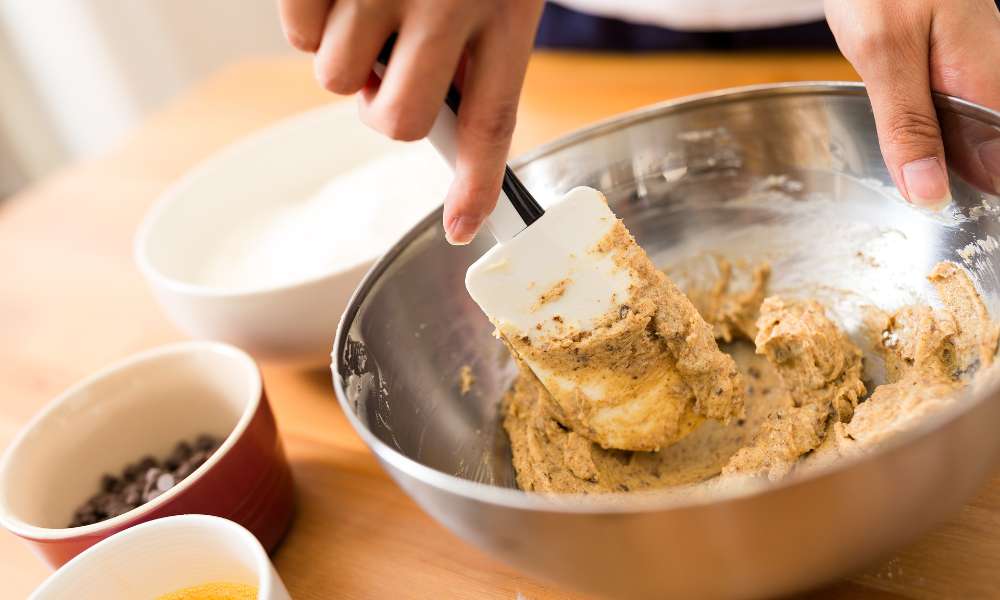Mixing bowls are an essential tool in every kitchen, serving a variety of functions that extend beyond their primary purpose of mixing ingredients. These versatile containers come in a range of materials, sizes, and designs, each tailored to specific culinary tasks. From preparing dough for baking to tossing salads and marinating meats, mixing bowls provide the ideal environment for combining ingredients efficiently and effectively. Selecting the right mixing bowl can significantly enhance your cooking and baking experience, ensuring that your culinary creations achieve the desired consistency and flavor. In this guide, we’ll explore the various uses of mixing bowls, the different types available, and how to choose the best one for your needs.
Overview
Mixing bowls are indispensable kitchen tools that serve multiple purposes, making them a staple in both home and professional kitchens. These versatile containers are designed to mix, combine, and prepare ingredients for various recipes. They come in various shapes, sizes, and materials, catering to different culinary needs and preferences. Whether you are baking a cake, preparing a salad, or marinating meat, the right mixing bowl can enhance your cooking efficiency and ensure consistent results. Understanding the different types and uses of mixing pots can help you make informed decisions when equipping your kitchen.
Types
Mixing bowls are available in a variety of types, each suited for specific tasks. The most common types include standard mixing pots, nesting pots, and bowls with non-slip bases. Standard mixing pots are versatile and can be used for a wide range of tasks. Nesting pots come in sets of varying sizes, which can be stacked together for easy storage. Bowls with non-slip bases provide stability during mixing, preventing spills and accidents. Each type offers unique advantages, allowing you to choose the best option based on your culinary requirements and kitchen space.
Materials Used
Mixing bowls are made from a variety of materials, each offering distinct benefits. Common materials include stainless steel, glass, plastic, and ceramic. Stainless steel bowls are durable, lightweight, and resistant to stains and odors, making them ideal for vigorous mixing. Glass bowls are non-reactive and allow for easy visibility of ingredients, but they can be heavy and breakable. Plastic bowls are lightweight and affordable but may retain odors and stains over time. Ceramic bowls are aesthetically pleasing and perfect for serving, though they can be heavy and prone to chipping. Choosing the right material depends on your specific needs and preferences.
Functions
Mixing bowls serve numerous functions in the kitchen, making them essential for various culinary tasks. They are primarily used for mixing ingredients, but their versatility extends to serving salads, storing leftovers, marinating meats, and even serving as a vessel for rising dough. Mixing pots can also be used for beating eggs, whipping cream, and tossing salads. Their multi-functionality makes them a valuable addition to any kitchen, enabling cooks to perform a wide range of tasks with ease and efficiency. Understanding the diverse functions of mixture bowls can help you maximize their use in your culinary endeavors.
Choosing the Right Mixing Bowl
Selecting the right mixing bowl involves considering several factors, including size, material, and intended use. The size of the bowl should match the quantity of ingredients you typically prepare. A larger bowl is ideal for mixing dough or large batches, while smaller bowls are perfect for whisking eggs or combining small amounts of ingredients. Read, kitchen aid mixing bowls. The material should suit your cooking style and preferences, whether you prioritize durability, weight, or aesthetic appeal. Additionally, consider bowls with features like non-slip bases, handles, and spouts for added convenience. By carefully selecting the right mixing bowl, you can enhance your cooking experience and achieve better results.
Baking
Mixing bowls are crucial tools for baking, aiding in the preparation of batters, doughs, and other ingredients. Stainless steel and glass bowls are particularly favored in baking due to their durability and non-reactive properties. A set of nesting pots can be especially useful, allowing bakers to prepare multiple components of a recipe simultaneously. Additionally, pots with measurement markings can streamline the baking process, ensuring accurate ingredient proportions. Whether you are whipping up a cake batter, kneading dough, or mixing frosting, the right mixing bowl can make the baking process more efficient and enjoyable.
Cooking
In cooking, mixing bowls play a vital role in the preparation of various dishes. They are used for tasks such as mixing sauces, marinating meats, and tossing salads. Stainless steel bowls are ideal for these tasks due to their durability and resistance to stains and odors. Plastic pots are also popular for their lightweight nature and affordability. Bowls with non-slip bases and spouts can provide added convenience, making it easier to pour ingredients without spilling. By choosing the appropriate mixture pots for your cooking needs, you can streamline your meal preparation and enhance the flavors and textures of your dishes.
Specialty
Specialty mixing bowls are designed for specific culinary tasks, offering unique features that cater to particular needs. For example, batter pots often come with spouts for easy pouring and measurement markings for precise ingredient proportions. Salad bowls may include lids for convenient storage and transport. There are also pots with built-in graters or colanders for added functionality. These specialty pots can simplify specific tasks and enhance your overall cooking and baking experience. Investing in a few specialty mixture pots can be beneficial, particularly if you frequently prepare certain types of dishes.
Maintenance
Proper maintenance of mixing bowls ensures their longevity and optimal performance. Different materials require specific care to preserve their quality. Stainless steel bowls should be washed with mild soap and water and dried immediately to prevent water spots. Glass and ceramic bowls are dishwasher safe but should be handled carefully to avoid breakage. Plastic pots should be washed by hand to prevent warping and staining. Regularly inspecting your pots for any signs of wear or damage is essential. By following the appropriate maintenance guidelines, you can extend the lifespan of your mixture bowls and keep them in excellent condition.
Innovative Mixing Bowl Designs
Innovative designs in mixing bowls have introduced new features that enhance their functionality and convenience. Some modern mixture pots come with built-in measurement markings, colanders, or graters, allowing for multifunctional use. Bowls with airtight lids provide the option to store ingredients or leftovers directly in the bowl. Non-slip bases and ergonomic handles improve stability and ease of use. These innovative features make mixture pots more versatile and user-friendly, catering to the needs of contemporary kitchens. Staying updated with the latest designs can help you choose mixture pots that offer enhanced functionality and convenience.
Modern Kitchens
In modern kitchens, mixing bowls are not only functional but also play a role in kitchen aesthetics. Sleek and stylish designs are increasingly popular, with mixture pots available in various colors and finishes to match kitchen decor. Materials like stainless steel and glass offer a contemporary look, while ceramic and plastic pots provide a more traditional appeal. The integration of advanced features, such as non-slip bases and measurement markings, aligns with the demands of modern cooking. Mixture bowls have evolved to become both practical tools and decorative elements in today’s kitchens, reflecting personal style and culinary preferences.
Future Trends
The future of mixing bowls is likely to see continued innovation, with advancements in materials and design features. Eco-friendly materials and sustainable production methods are expected to become more prevalent, catering to environmentally conscious consumers. Smart technology integration, such as pots with digital scales or temperature sensors, may become more common, enhancing precision in cooking and baking. Customizable designs and multi-functional features will likely gain popularity, offering greater versatility and convenience. Keeping an eye on these future trends can help you stay ahead in equipping your kitchen with the latest and most efficient mixture pots.
Conclusion
Mixing bowls are fundamental kitchen tools that offer versatility and functionality for a wide range of culinary tasks. Understanding the different types, materials, and functions of mixture pots can help you choose the best options for your needs. Whether you are baking, cooking, or preparing specialty dishes, the right mixing bowl can enhance your efficiency and achieve better results. Proper maintenance and staying updated with innovative designs and future trends ensure that your mixture bowls remain valuable assets in your kitchen. Embrace the full potential of mixture pots to elevate your cooking and baking experiences.





